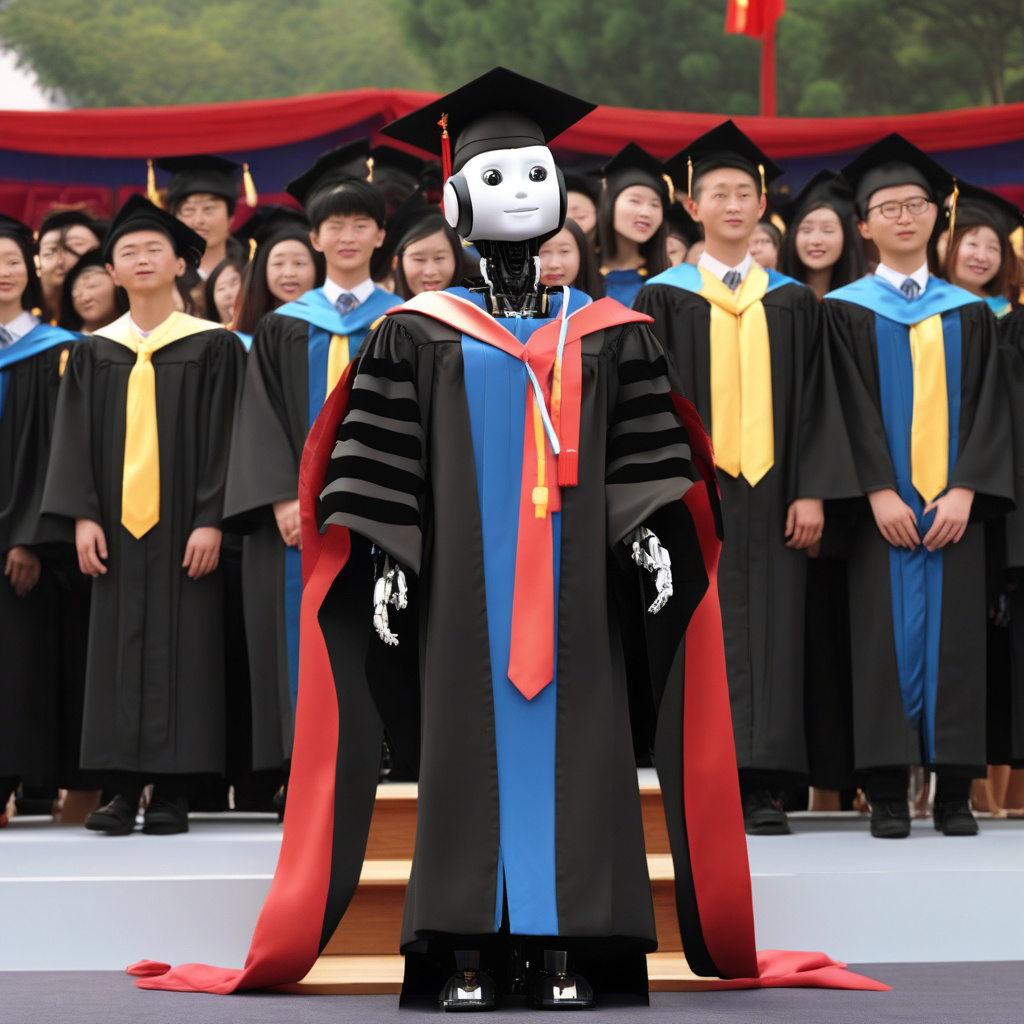Humanoid Robot Graduates from High School in China, Shocks Audience
A humanoid robot called Shuang Shuang, also known as ‘Bright’, walked down the graduation ceremony aisle at a high school in China, leaving the crowd in awe. The robot, resembling a human with its sleek design and advanced features, not only participated in the ceremony but also interacted with the students and teachers present, showcasing the capabilities of artificial intelligence in a real-world setting.
Shuang Shuang’s graduation marks a significant milestone in the integration of robotics and technology into everyday life. It raises questions about the role of robots in education and the workforce, sparking debates on the potential benefits and challenges that come with their increasing presence.
One of the key advantages of humanoid robots like Shuang Shuang is their ability to assist in various tasks, ranging from educational support to customer service. In the field of education, robots can provide personalized learning experiences, support teachers in lesson delivery, and even help students with special needs. By leveraging artificial intelligence and machine learning algorithms, robots can adapt to individual learning styles and pace, making education more inclusive and effective.
Moreover, humanoid robots have the potential to revolutionize industries such as healthcare, manufacturing, and hospitality. With their precision, reliability, and efficiency, robots can perform tasks that are repetitive, dangerous, or labor-intensive, freeing up human workers to focus on more creative and strategic endeavors. This not only increases productivity and cost-effectiveness but also improves the overall quality of products and services.
Despite the numerous benefits that humanoid robots offer, their integration into society also raises ethical and social considerations. Concerns about job displacement, data privacy, and autonomy have been at the forefront of discussions surrounding the use of robots in various sectors. It is crucial for policymakers, businesses, and the public to address these challenges proactively and establish guidelines that ensure the responsible and ethical deployment of robotics technology.
As we witness the graduation of a humanoid robot from a high school in China, we are reminded of the incredible advancements that have been made in the field of robotics and artificial intelligence. The integration of robots into education and other industries holds immense potential for transforming the way we live, work, and learn. By embracing innovation and leveraging technology responsibly, we can create a future where humans and robots coexist harmoniously, driving progress and prosperity for all.
In conclusion, the graduation of Shuang Shuang, the humanoid robot, serves as a powerful example of the possibilities that lie ahead in the era of robotics and artificial intelligence. As we continue to explore the capabilities of these technologies, it is essential to strike a balance between innovation and ethics, ensuring that the benefits of robotics are maximized while minimizing potential risks. The journey towards a future where humans and robots thrive together is underway, and it is up to us to shape it thoughtfully and responsibly.
#HumanoidRobot, #ArtificialIntelligence, #RoboticsTechnology, #EthicalAI, #FutureInnovation












